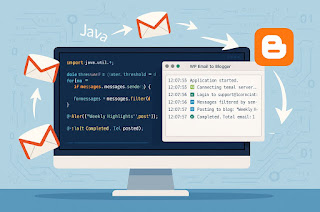What are
the Other Famous tools like Gentran and different architecture?
Different Tools available
Different
Architectures available
- SOA
- ESB – Sonic ESB
- MOM – Message oriented Middle wear
How XML is used in integration ?
Enterprise Application Integration is
one of the most promising uses of XML. Most enterprises have redundant data in
legacy files and other relational databases that have proliferated across the
enterprise. In the past, it has been difficult to develop integrated databases
– where common data can be shared as one non-redundant version that is
available to all. Legacy and other non-integrated databases had to be thrown
away, to be replaced by new integrated databases. This was clearly not
realistic, as those legacy and other systems would then need to be redeveloped.
Instead, XML enables metadata defining
each of these legacy and other databases to be used to achieve application
integration … without having to throw out the legacy and other systems that
depend on that data. Modeling tools can be used to reverse engineer these older
databases, to capture the metadata defining the records and fields in legacy
files, or tables and columns in relational databases. This metadata can then be
used to define the Document Type Definition (DTD) or Document Content Description
(DCD) files that are required by XML for integration.
The benefits of Enterprise Application
Integration can be obtained through this use of XML, while continuing to use
the legacy and other systems that require the older data in its original format.
This is a Win / Win situation, as these older systems can also be given a new
lease of life. This is achieved not only through integration using XML as
above, but
also by utilizing legacy metadata with XML and the
Extensible Style Language (XSL). With XML and XSL tools that are becoming
available for XML application development (see below), XSL can transform XML
tagged data from these older databases by adding a browser front-end to those
legacy and other applications
What are
other standards which u can deal with Gentran (like EDI)?
1. B2B-Business to Business
2. AS2-Applicabilty Statement 2
3.
AS1 - Applicability Statement 1
GIS is designed for two purposes: Connections to
trading partners and integrating business systems internally. Expanding upon 


No comments:
Post a Comment